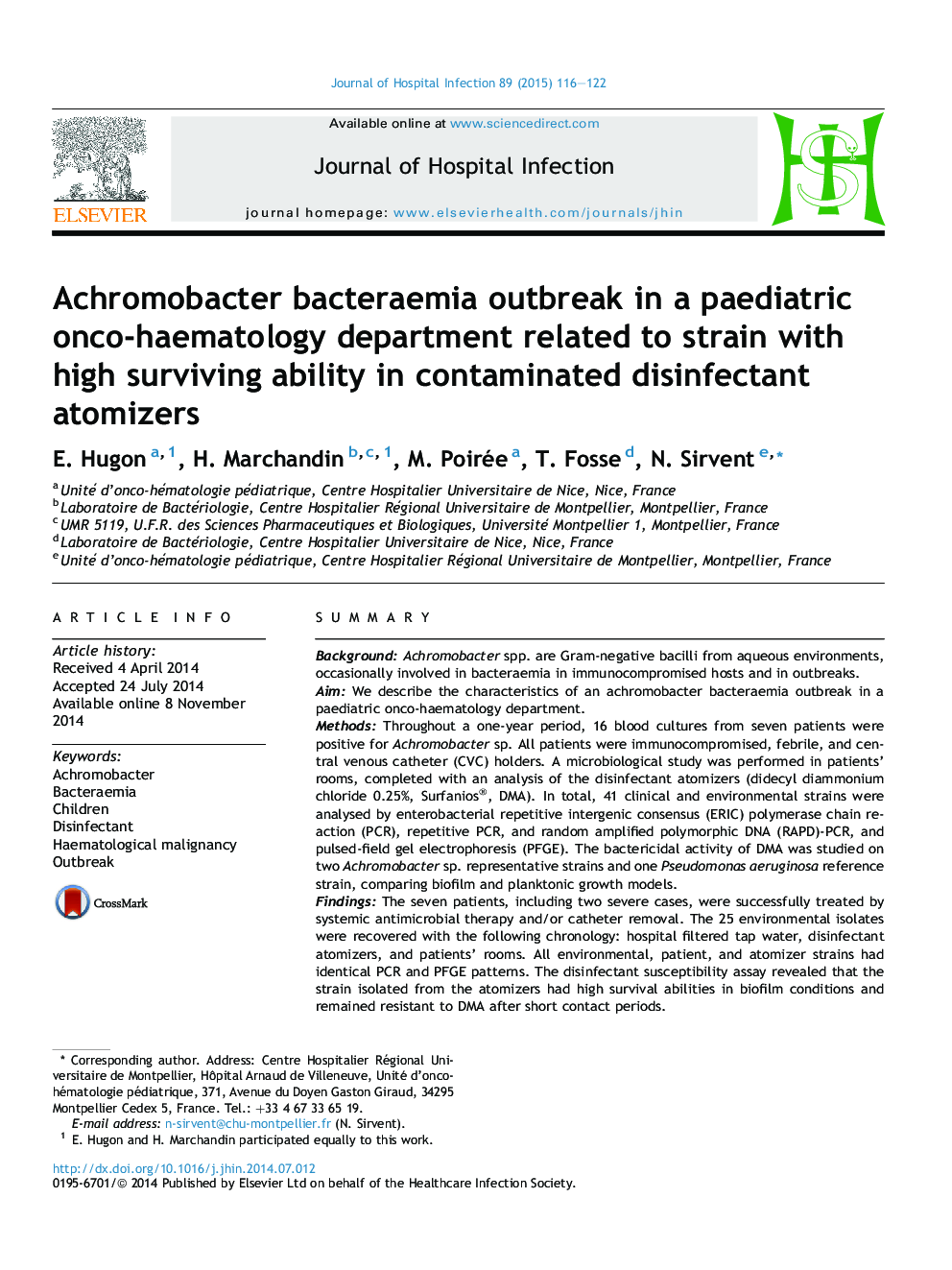| کد مقاله | کد نشریه | سال انتشار | مقاله انگلیسی | نسخه تمام متن |
|---|---|---|---|---|
| 3371590 | 1219212 | 2015 | 7 صفحه PDF | دانلود رایگان |
SummaryBackgroundAchromobacter spp. are Gram-negative bacilli from aqueous environments, occasionally involved in bacteraemia in immunocompromised hosts and in outbreaks.AimWe describe the characteristics of an achromobacter bacteraemia outbreak in a paediatric onco-haematology department.MethodsThroughout a one-year period, 16 blood cultures from seven patients were positive for Achromobacter sp. All patients were immunocompromised, febrile, and central venous catheter (CVC) holders. A microbiological study was performed in patients' rooms, completed with an analysis of the disinfectant atomizers (didecyl diammonium chloride 0.25%, Surfanios®, DMA). In total, 41 clinical and environmental strains were analysed by enterobacterial repetitive intergenic consensus (ERIC) polymerase chain reaction (PCR), repetitive PCR, and random amplified polymorphic DNA (RAPD)-PCR, and pulsed-field gel electrophoresis (PFGE). The bactericidal activity of DMA was studied on two Achromobacter sp. representative strains and one Pseudomonas aeruginosa reference strain, comparing biofilm and planktonic growth models.FindingsThe seven patients, including two severe cases, were successfully treated by systemic antimicrobial therapy and/or catheter removal. The 25 environmental isolates were recovered with the following chronology: hospital filtered tap water, disinfectant atomizers, and patients' rooms. All environmental, patient, and atomizer strains had identical PCR and PFGE patterns. The disinfectant susceptibility assay revealed that the strain isolated from the atomizers had high survival abilities in biofilm conditions and remained resistant to DMA after short contact periods.ConclusionThe use of disinfectant atomizers associated with the survival of Achromobacter in the atomizer pipes may explain the contamination and colonization of the CVC. Control measures (non-atomizer containers and use of sterile water) allowed the eradication of the source and the outbreak control.
Journal: Journal of Hospital Infection - Volume 89, Issue 2, February 2015, Pages 116–122
